AFFORDABLE ACCESS CONTROL SYSTEM
Access control systems are electronic systems that allow automated approval for authorised personnel to enter through a security portal without the need for a security officer to review and validate the authorization of the person entering the portal. Usually, this is done by using a credential to present to the system in order to verify their authorization. A door or corridor that establishes an access point within a security perimeter is known as a security portal. The majority of access control systems employ a card-based credential that must be scanned or submitted to an electronic reader in order to be accepted.
These systems can be used from a few doors to thousands of doors and sensors connected via the company’s computer network. Access control systems that use biometric authentication are the most secure. Utilizing a physical characteristic of the person, such as their fingerprints, hand geometry, vein pattern identification, voiceprint, or iris, to confirm their identity is known as biometrics. Although a card reader is commonly used in addition to biometrics, it can be utilised as the only method of verification. Access control systems are one of the most important resources in a business and are highly valuable. Access control systems can be divided into three categories: Mandatory Access Control (MAC), Role-Based Access Control (RBAC), and Discretionary Access Control (DAC) (MAC).
Types of Access Control Software
A lock and metal key are less technologically sophisticated than modern security systems. They also make use of software to authenticate individuals and manage access privileges. The most typical kinds of access control software are as follows:
- Server-based access control;
On-premise access control systems, which are typically used in large businesses and commercial buildings, rely on local servers to host and operate the software. In order to use server-based access control, an organization typically has to buy and renew software licenses as well as dedicate IT personnel to manage the servers. If the organization needs access control at many sites, servers must be established at each location.
- Web-based access control;
This sort of access control software also referred to as embedded access control, connects to the LAN and runs through a web browser application, making it accessible from any device on the network.
- Cloud-based access control;
Cloud-based access control software routinely syncs with nearby ACUs and is hosted on a decentralised server that is typically administered by a third party, in contrast to the other two forms of access control software. Cloud-based access control requires an internet connection because the system syncs in the cloud. If there is a system failure, the ACU will just sync when it comes back online.
WHAT DOES AN ACCESS CONTROL SYSTEM COST?
When purchasing an access control system, there are many costs to take into account. They can be divided into two categories: acquisition costs and ongoing expenses. The first is the cost of the hardware, which includes both the price of buying the devices and the price of installing them. Also take into account any structural changes that will be necessary, such as adding more networking points or providing power for an access card reader.
The additional expenses are the ongoing fees associated with subscriptions. Future upgrades will be necessary if the program is bought outright, and their cost must be factored into the price.
Here are a few affordable access control systems under a hundred thousand naira (N100,000) for small-time businesses.

ZKTECO F-16 (N79,000)
The F16 fingerprint access control terminal has a proximity reader built in (EM). It has an IP65 rating, making it resistant to damage from water, dust, and other elements. On a network with both Ethernet and RS485 serial ports, it is simple to set up. Readers can be connected to ZK or other third-party access control panels via the Weigand-OUT connector.

ZKTECO F7-C (N71,000)
With ZKTeco’s F7 biometric reader, which offers the option to be installed solo or with any third-party panel that supports 26-bit Wiegand, access control is as simple as one touch.
ZK readers have a competitive advantage thanks to affordable, quick, and dependable performance. Up to 2,200 fingerprint templates and 30,000 transactions can be stored on each device. Since the majority of our readers have a user-friendly keypad and display, enrolling users is quick and simple.

ZKTECO FR1500 (N52,000)
A single-gang flush-mounted secondary fingerprint access control reader, the ZKTeco FR1500-A. It works with ZK inBio/inBioPro Controllers, standalone fingerprint devices that can be used in a variety of settings.

ZKTECO SF-100 (N72,000)
The SF100 is a network- and stand-alone-capable fingerprint terminal that uses IP technology. It can link to ZKAccess3.5 software in network mode to manage time attendance and control access. The Wiegand output of the SF100 allows it to be easily connected as a slave reader to ZKTeco or any other third-party controller.

ZKTECO X-7 (N30,000)
A cutting-edge biometric fingerprint reader called the X7 is used in access control applications. Delivering unmatched performance employing a cutting-edge algorithm for dependability, accuracy, and quick matching. With an interface for a third-party electric lock, alarm, door sensor, exit button, and doorbell, it may function independently.
The likelihood that private information will disappear or get into the wrong hands increases with the size of your team. With its reliable access control solutions, SecureTech Nigeria offers a remedy for this. Along with an online portal for additional information and knowledge base, and phone help when necessary, SecureTech Nigeria also provides specialised support for our products.
